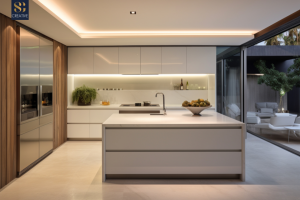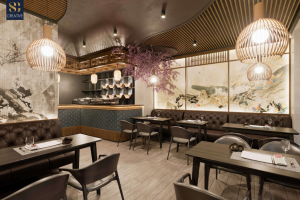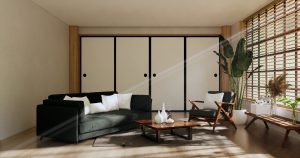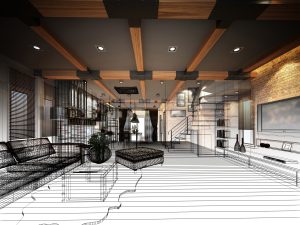While many homeowners focus on furniture, paint colors, and decor, the role of lighting, particularly its color temperature, often goes unnoticed. However, color temperature has a profound influence on the way a space feels, the way colors appear, and how various materials and finishes are perceived. Let’s explore how color temperature affects your furnishings and how to make the best lighting choices for your home.
1. What Is Color Temperature and Why Is It Important?
Color temperature, measured in Kelvins (K), refers to the warmth or coolness of a light source and plays a significant role in the overall ambiance of a room. It is a key aspect of interior design that can influence the mood, functionality, and visual appeal of a space.
The color temperature of a light source affects not only how we feel in a room but also how furniture, decor, and architectural features are perceived. Understanding the different types of color temperatures and their effects can help you create a harmonious and functional environment that enhances the aesthetic appeal of your home.
Warm Light (2000-3000K)
Warm lighting, typically ranging from 2000K to 3000K, creates a cozy, inviting atmosphere often associated with comfort, warmth, and relaxation. This type of lighting is commonly used in spaces where you want to create a relaxed and intimate vibe, such as living rooms, bedrooms, and dining rooms. The soft, golden hue of warm light enhances the natural beauty of earthy and warm-toned furniture, making it ideal for pieces made of wood, leather, and rich textiles.
Wooden furniture, in particular, benefits from the warm glow, as it highlights the intricate grain patterns and rich color tones, giving the space a sense of elegance and warmth. Additionally, warm light is perfect for rustic decor and can be used to create a welcoming and homely atmosphere.
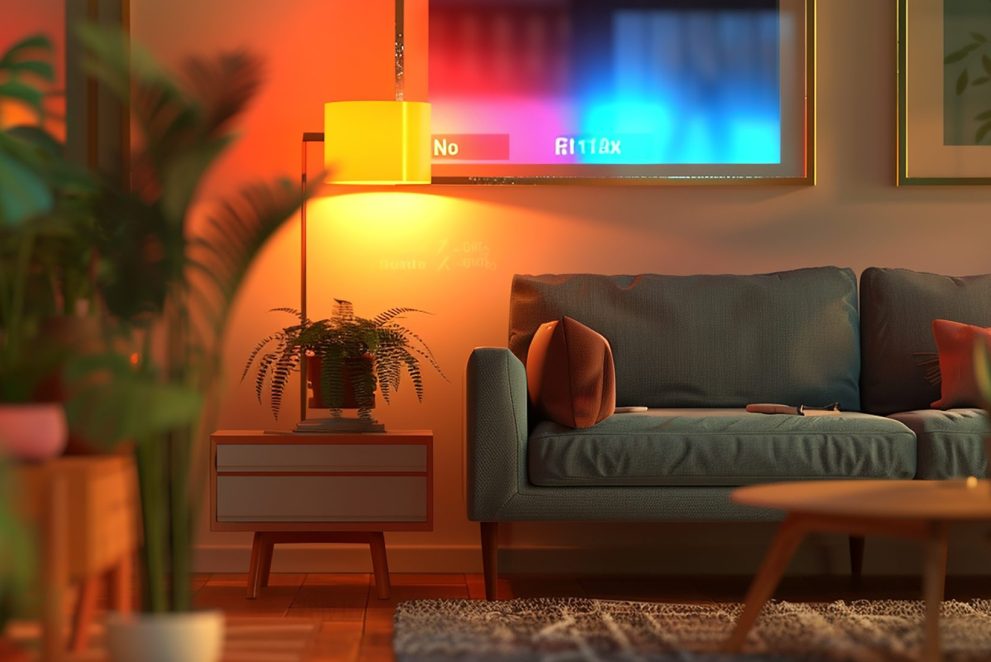
Warm light enhances wood tones, creating a cozy atmosphere.
Neutral Light (3100–4500K)
Neutral lighting, with a color temperature ranging from 3100K to 4500K, sits between warm and cool light, providing a balanced and versatile illumination. This type of light offers a more natural and true-to-life representation of colors, making it an excellent choice for spaces that require both comfort and functionality. Neutral light creates an ambiance that is neither too harsh nor too dim, making it ideal for living rooms, dining areas, and bedrooms where you need a versatile atmosphere.
Its neutral tone enhances the look of various materials and furniture styles, without distorting their colors. Whether your space features modern, traditional, or transitional furniture, neutral lighting complements them all, giving the room a timeless and adaptable aesthetic. Additionally, it is perfect for showcasing artwork, decor, and accessories in their true colors, making it a great choice for spaces where visual clarity and accuracy are important.
Cool Light (4500-6000K+)
Cool lighting, typically ranging from 4500K to 6000K or higher, mimics natural daylight and provides a brighter, more energetic environment. This type of lighting is ideal for areas that require focus, clarity, and precision, such as kitchens, bathrooms, and home offices. Cool light enhances visibility and creates an atmosphere that promotes alertness, making it a great choice for task-oriented spaces.
Furthermore, cool lighting complements modern furniture designs, highlighting sleek surfaces and clean lines, often found in contemporary or minimalist decor. For light-colored upholstery, cool light provides a clean and refreshing look, making the space feel brighter and more spacious. Whether you are looking to energize a workspace or create a fresh, invigorating atmosphere, cool lighting serves as an excellent tool for brightening up your home.
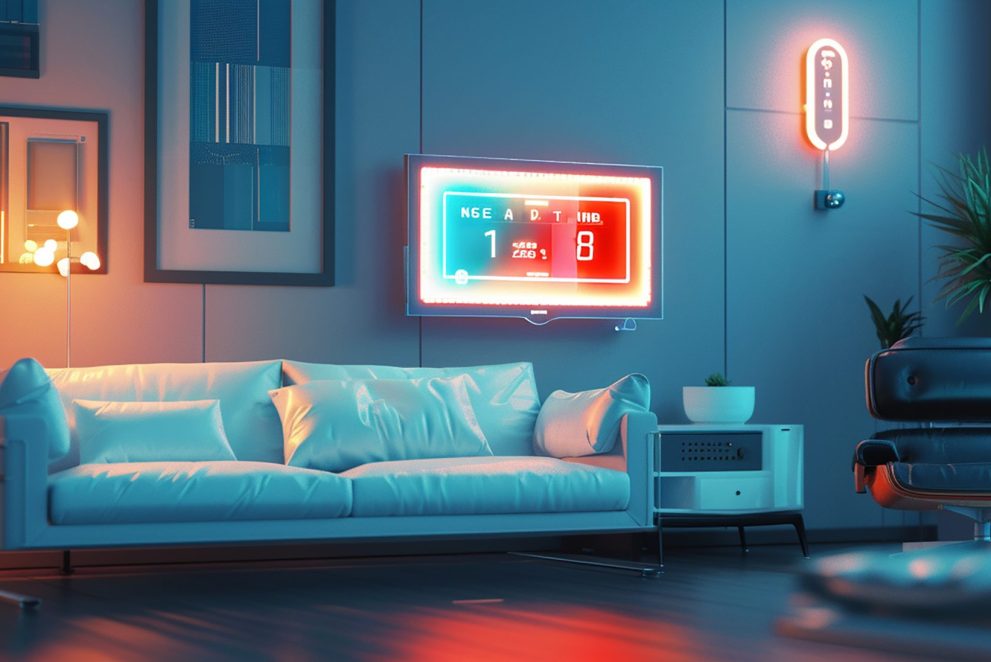
Cool light highlights modern designs with a clean, fresh look.
2. Effects of Color Temperature on Furnishings
When selecting lighting for a room, it’s crucial to consider how the color temperature interacts with the materials and finishes of the furniture. The right lighting can highlight specific textures and features, bringing out the beauty of different surfaces and creating the desired ambiance in the space.
Color temperature can dramatically alter the way furniture is perceived, affecting everything from its richness and vibrancy to its mood and atmosphere. For example, warm lighting can enhance the depth and texture of wooden pieces, while cool lighting can make sleek, glossy finishes appear more vibrant and modern. Here’s a closer look at how different lighting temperatures affect common interior finishes:
Wood Finishes
Wood is a material that greatly benefits from the warmth of specific light temperatures. Warm light, with its rich, golden hue, enhances the natural grains, tones, and textures of wood. This lighting brings out the richness in materials such as mahogany, oak, and walnut, making the wood appear more vibrant, inviting, and welcoming. The warm glow accentuates the unique patterns in the wood, making it feel more luxurious and comforting. On the other hand, cool lighting, which leans towards a bluish tone, can make wood finishes appear duller and less lively. The natural warmth of the wood may be muted under cool light, creating a less intimate and inviting atmosphere.

Warm light enhances the natural beauty of wood textures and grains.
Metal and Glass
For sleek, modern furniture made of metal, glass, or high-gloss finishes, cool light is an excellent choice. The bright, crisp nature of cool light enhances the reflective surfaces of these materials, making them appear sharper and more sophisticated. Cool lighting helps create a clean, fresh look, especially in minimalist or contemporary spaces where simplicity and clarity are key. This type of lighting makes metals like stainless steel or chrome look polished and pristine, while glass surfaces take on a sparkling, almost ethereal quality.
Conversely, warm light softens these materials, adding a subtle, cozy ambiance that is more inviting but may detract from their sharp, modern aesthetic. Warm light can create a more relaxed environment by tempering the clinical feel that metal and glass might have under cooler lighting.
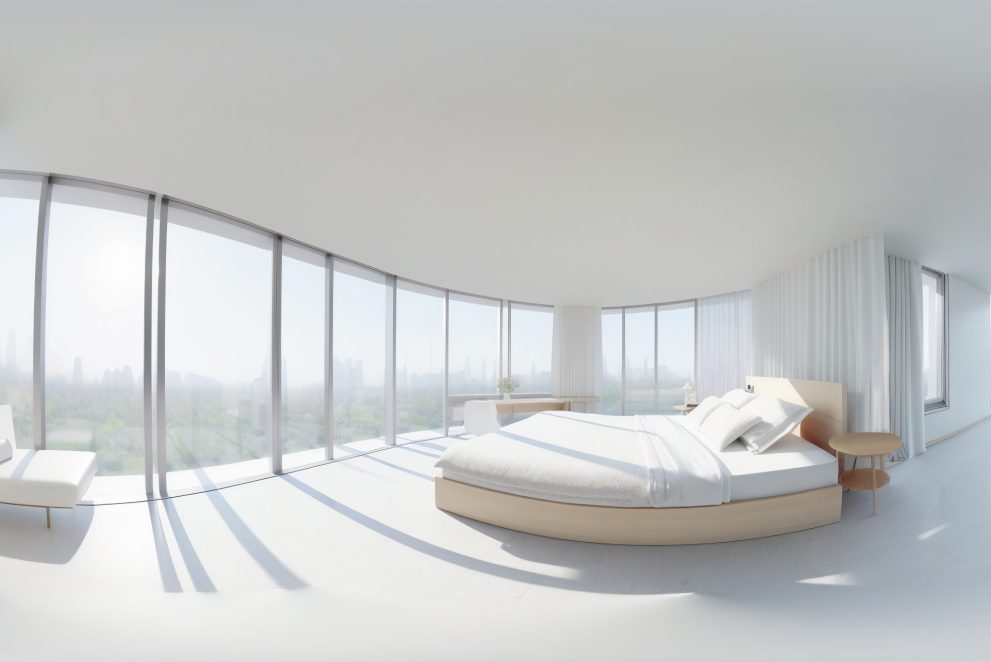
Cool light highlights the sleek, modern look of metal and glass.
Fabric and Upholstery
Lighting color temperature also has a significant effect on how fabrics and upholstery are perceived. Warm lighting enhances earthy tones like beige, brown, and warm reds, giving fabrics a richer, more inviting feel. These colors often appear deeper and more saturated, which adds warmth and comfort to living spaces.
Cool lighting, on the other hand, is ideal for enhancing cooler tones like grays, blues, and greens, which are often used in modern or more sophisticated interiors. Cool light brings out the crispness of these colors, making the fabric appear fresh, clean, and sleek, which adds a more refined and polished feel to the space. Whether you’re decorating a cozy living room or a chic contemporary bedroom, the right lighting temperature can either soften the look of your upholstery or make it pop with vibrant sophistication.
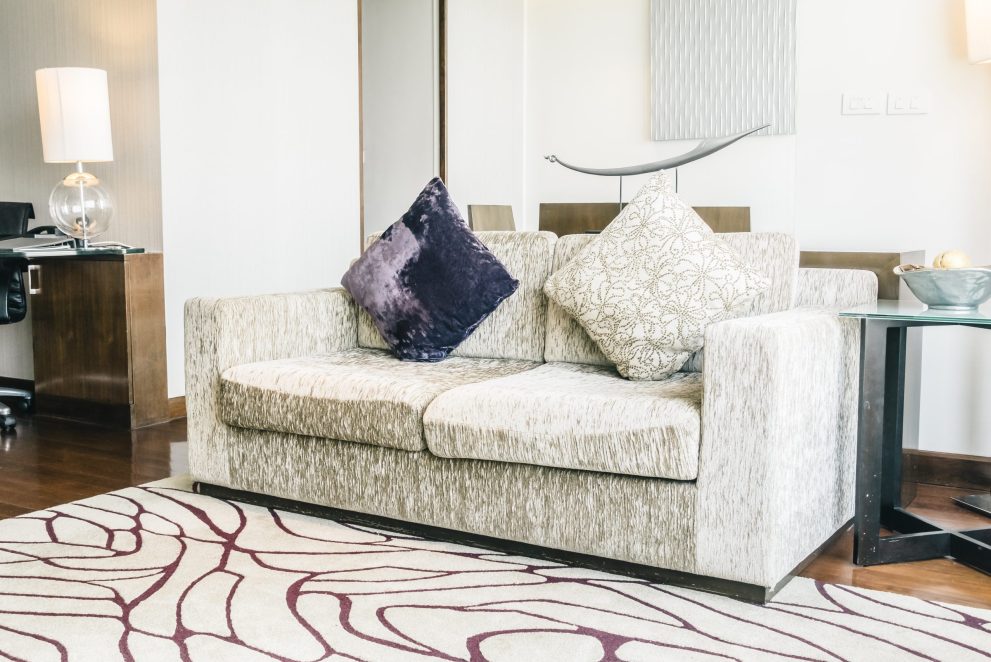
Warm light deepens fabric tones, while cool light enhances crisp colors.
Versatility Designs
Neutral light, with its balanced and natural tone, offers a perfect middle ground that works well for both traditional and modern interiors. It provides a more versatile solution when showcasing furniture in a variety of settings. Neutral light accurately represents the true colors and textures of furniture without distorting or enhancing certain elements. This makes it an excellent choice for multipurpose spaces, such as showrooms, galleries, or living rooms, where it’s important to showcase a wide range of furnishings and materials in their best light.
With neutral light, you get a natural, unembellished look that works well for any design style, allowing the furniture and décor to speak for themselves. Whether you are aiming for a contemporary look or a more classic aesthetic, neutral lighting provides a timeless, adaptable solution for any space.
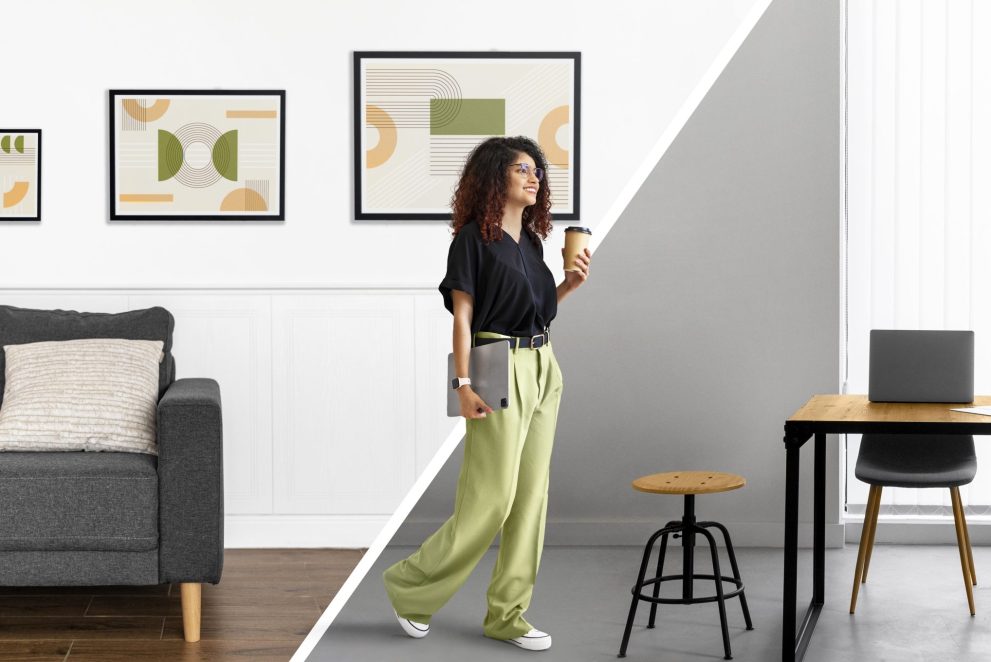
Neutral light showcases furniture in its true colors and textures.
3. Choosing the Right Color Temperature for Each Room
The color temperature of lighting has a significant impact on the overall perception and functionality of a room. Cool light, with its bright and crisp tone, can make small spaces feel larger and more open, adding a sense of clarity and expansiveness. This makes cool lighting an ideal choice for smaller rooms or spaces that need to feel more spacious. In contrast, warm light creates a cozy and intimate atmosphere that helps to make larger areas feel more comfortable and enclosed, perfect for creating a relaxing environment in areas where you spend time unwinding.
Every room in your home serves a different purpose, and selecting the right color temperature for each can help achieve the intended mood while ensuring that each space is functional. Here are some tailored suggestions for choosing the best lighting for common rooms in your home:
-
Living Room: The living room is often the heart of the home, where you entertain guests or spend time relaxing. For this space, warm lighting (2700-3000K) is ideal as it creates a welcoming and comfortable environment. This warmth encourages relaxation and creates a cozy atmosphere that is perfect for gatherings or winding down after a long day.
-
Kitchen and Bathroom: Kitchens and bathrooms are spaces where brightness and clarity are essential. Cool lighting (4000-5000K) works well here, as it provides a crisp, clear illumination that enhances visibility, making it easier to perform tasks such as cooking or grooming. Cool light in these areas also helps keep the space feeling fresh and hygienic.
-
Bedroom: The bedroom is a place for rest and relaxation, so it’s important to set the right mood for unwinding at the end of the day. For optimal coziness, warm light works best. However, adjustable or dimmable lighting allows you to control the atmosphere depending on your needs. This flexibility lets you choose softer, warmer tones for a peaceful setting or brighter, more functional light when needed for activities like reading.
-
Home Office: A home office is a space that requires focus and energy, so selecting the right lighting is crucial for productivity. Cool, neutral light (around 4000K) is recommended for this room as it promotes concentration while helping to reduce eye strain. The clean, bright light mimics daylight and helps create a more alert and focused atmosphere, perfect for getting work done.
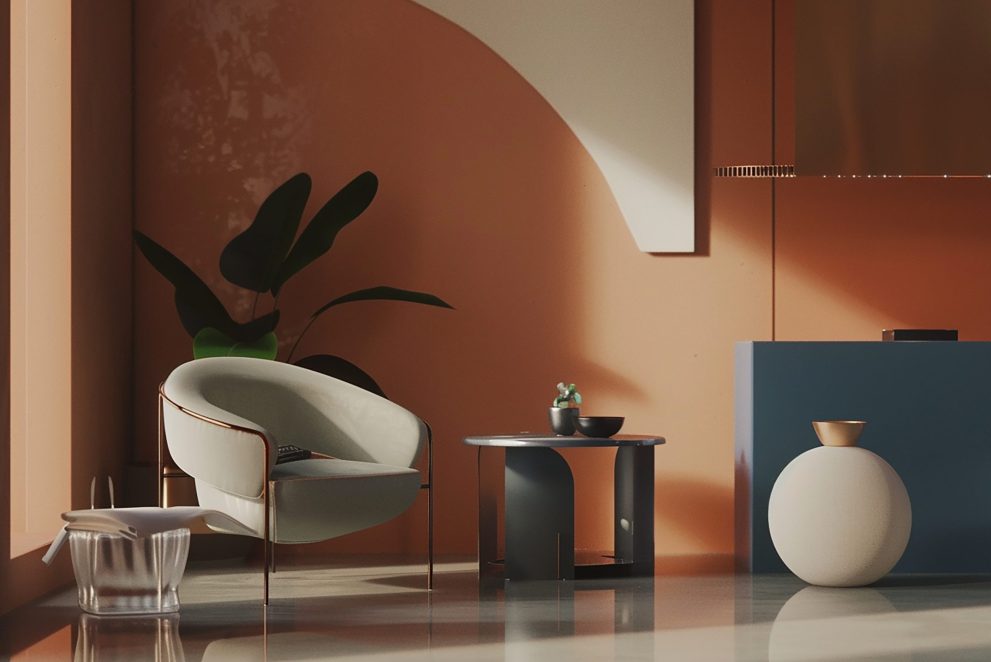
Selecting the appropriate color temperature for each can make a significant difference.
In addition to selecting the right color temperature for each room, consider layering your lighting to add depth and flexibility. This approach allows you to create a variety of moods and meet different functional needs throughout the day. You can combine:
- Ambient Lighting (e.g., ceiling fixtures or recessed lights) for general illumination. This sets the overall tone of the room.
- Task Lighting (e.g., desk lamps, under-cabinet lights, or reading lights) for specific activities like reading, cooking, or studying, ensuring adequate brightness for detailed work.
- Accent Lighting (e.g., wall sconces, LED strips, or spotlights) to highlight architectural features, artwork, or furniture, adding visual interest and enhancing the design of the space.
4. Challenges of Using the Wrong Color Temperature
Incorrect color temperature choices can not only diminish the aesthetic appeal of a room but also compromise the efficiency of the lighting. For instance, using a color temperature that is too cool in a space meant for relaxation can make the room feel too stark or clinical, leading to an uncomfortable atmosphere. Conversely, a space that requires focus, like a home office or kitchen, may suffer from a warm light setting, which can make tasks like reading or cooking more difficult due to insufficient brightness.
One of the main issues arises when there is a mismatch between the style of furniture and the color temperature used in the room. When warm-toned furniture is paired with cool light, or vice versa, the visual harmony of the space can be disrupted, creating an unsettling contrast. For example, rustic wooden furniture, with its rich, earthy tones, may appear flat and less inviting under cool lighting, which tends to emphasize blues and greens.
Similarly, more modern furniture, designed with sleek finishes, might lose its sharp, clean appeal under warm lighting, which softens its edges and details. This misalignment between the light and the furniture can lead to dissatisfaction with the overall look of the room, especially if you’ve chosen materials or finishes that rely on specific lighting to highlight their beauty.
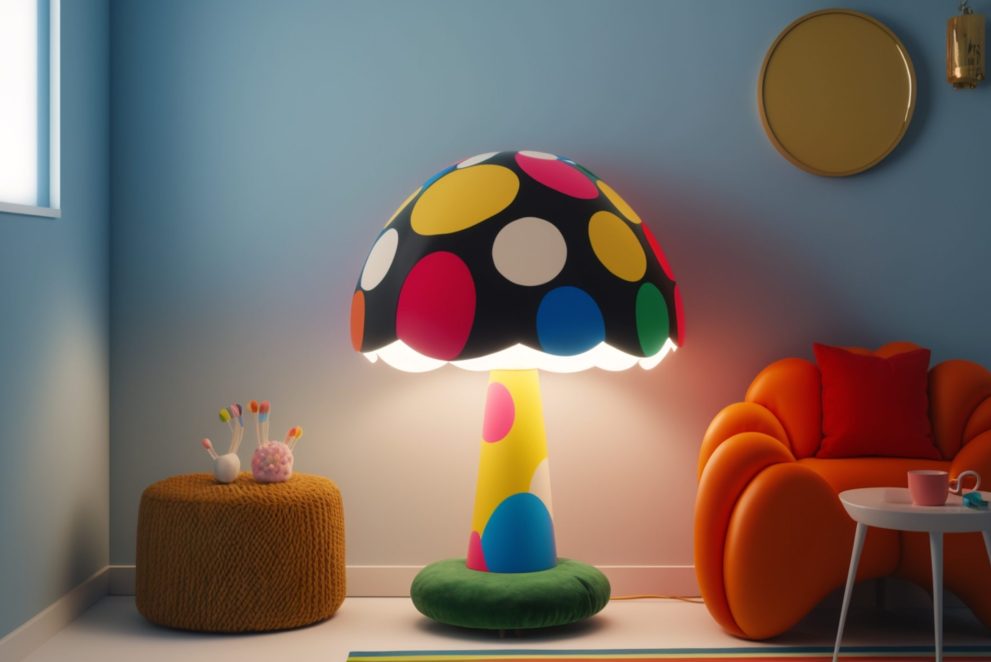
Wrong color temperature could compromise both efficiency and aesthetic appeal.
5. Emerging Trends in Lighting and Color Temperature
Smart Lighting Systems
As interior design continues to evolve, new trends in lighting and color temperature are helping homeowners create even more personalized and functional spaces. One of the most notable advancements is the rise of Smart Lighting Systems. These systems allow homeowners to customize color temperatures throughout the day, creating lighting that adapts to their needs and routines. For example, cooler tones can be used in the morning to promote alertness and energy, while warmer hues can be set in the evening to create a relaxed atmosphere conducive to winding down. This level of flexibility ensures that lighting can be optimized not only for aesthetic appeal but also for well-being and functionality.
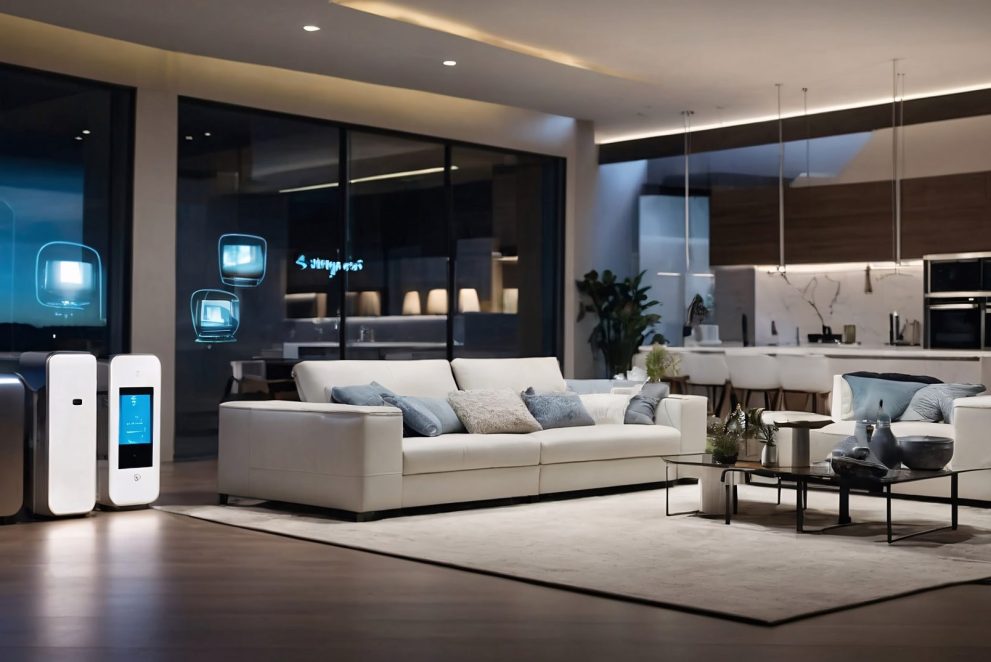
Smart lights adapt color temperatures to your daily routines
Human-Centric Lighting
Another exciting development is Human-Centric Lighting, an innovative approach that mimics the natural patterns of daylight. This technology dynamically adjusts the color temperature of the lighting to follow the sun’s course throughout the day. It has been shown to improve mood, enhance productivity, and regulate sleep patterns by aligning indoor lighting with the body’s natural circadian rhythms. Human-centric lighting is becoming increasingly popular in both residential and commercial settings, where creating a healthier and more comfortable environment is a priority.
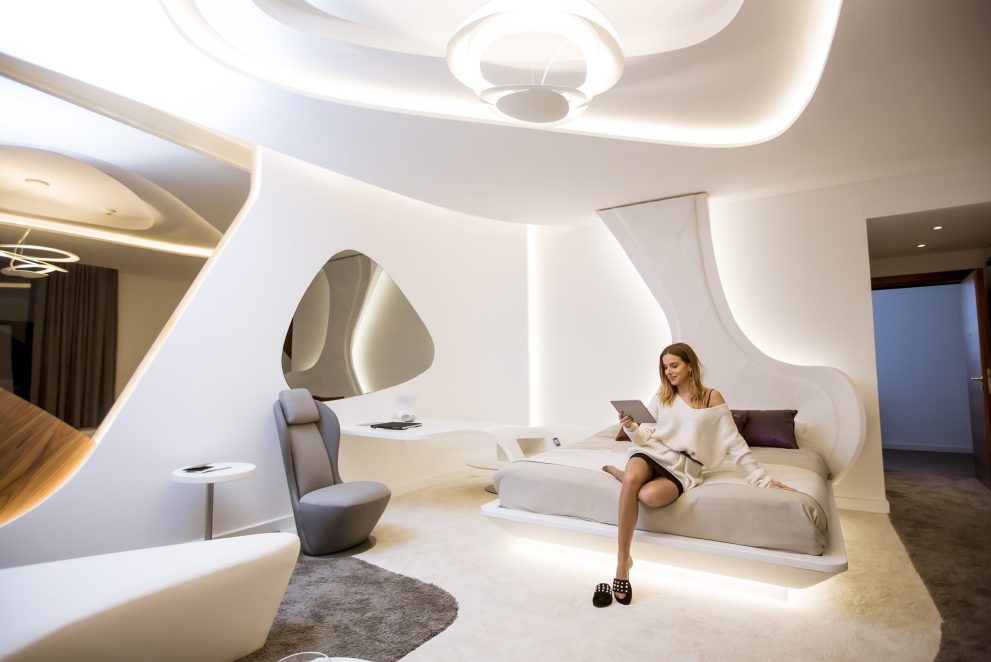
Mimic daylight with human-centric lighting for better mood and focus.
Sustainability and LED Advancements
The push for Sustainability and LED Advancements has also played a significant role in the evolution of lighting. LED lights, which are now more commonly found in homes, allow for easy adjustments to color temperature and are highly energy-efficient. These lights reduce energy consumption and the frequency of bulb replacements, offering both financial and environmental benefits. Furthermore, dimmable LEDs provide homeowners with greater flexibility, enabling them to shift between warm and cool color temperatures as desired, depending on the mood or activity. Whether for cozy nights in or productive workdays, the adaptability of LEDs helps create the perfect lighting for every occasion.
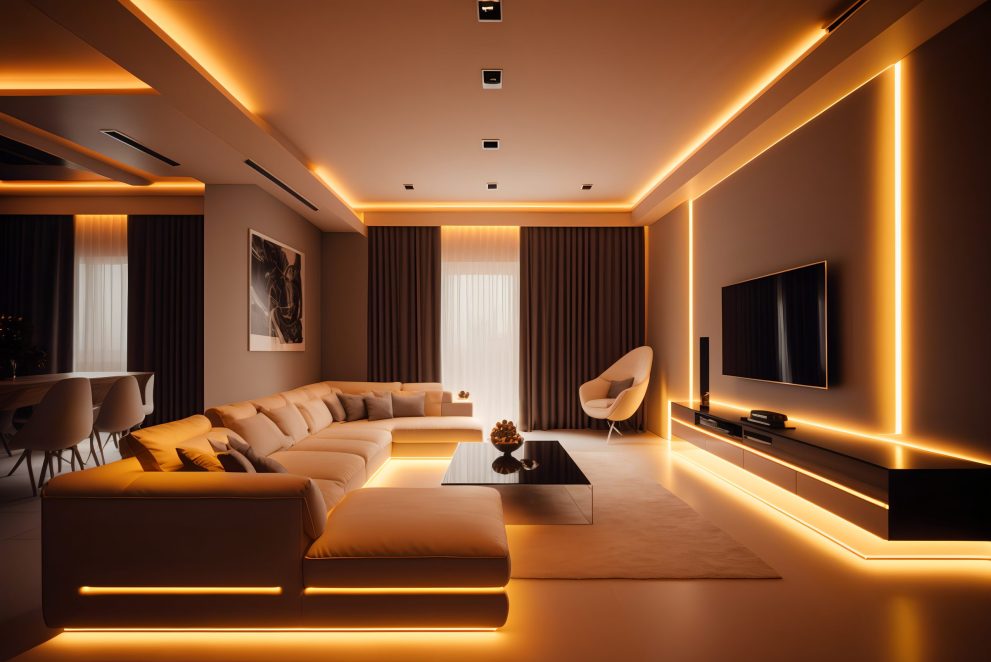
LEDs save energy and offer adjustable color temperatures.
Final Thoughts
The relationship between color temperature and interior design is a powerful tool that can dramatically transform a space. It influences the mood, functionality, and overall visual appeal of a room, allowing you to create a tailored environment that suits your lifestyle. Whether you are building a new home, renovating an existing space, or simply upgrading your lighting, understanding the nuances of color temperature will help you achieve a harmonious and inviting atmosphere that enhances the beauty of your furniture and decor.
If you’re planning your next project and need expert guidance in selecting the perfect lighting solutions, contact SG Creative. We specialize in offering personalized advice and tailored solutions to meet your unique design and construction needs. Together, let’s bring your vision to life and illuminate your space in the most beautiful and functional way possible!
▪️ Address: 7135 Amherst Street, La Mesa, California 91942
▪️ Phone: 619-800-2397
▪️ Website: thesgcorp.net


